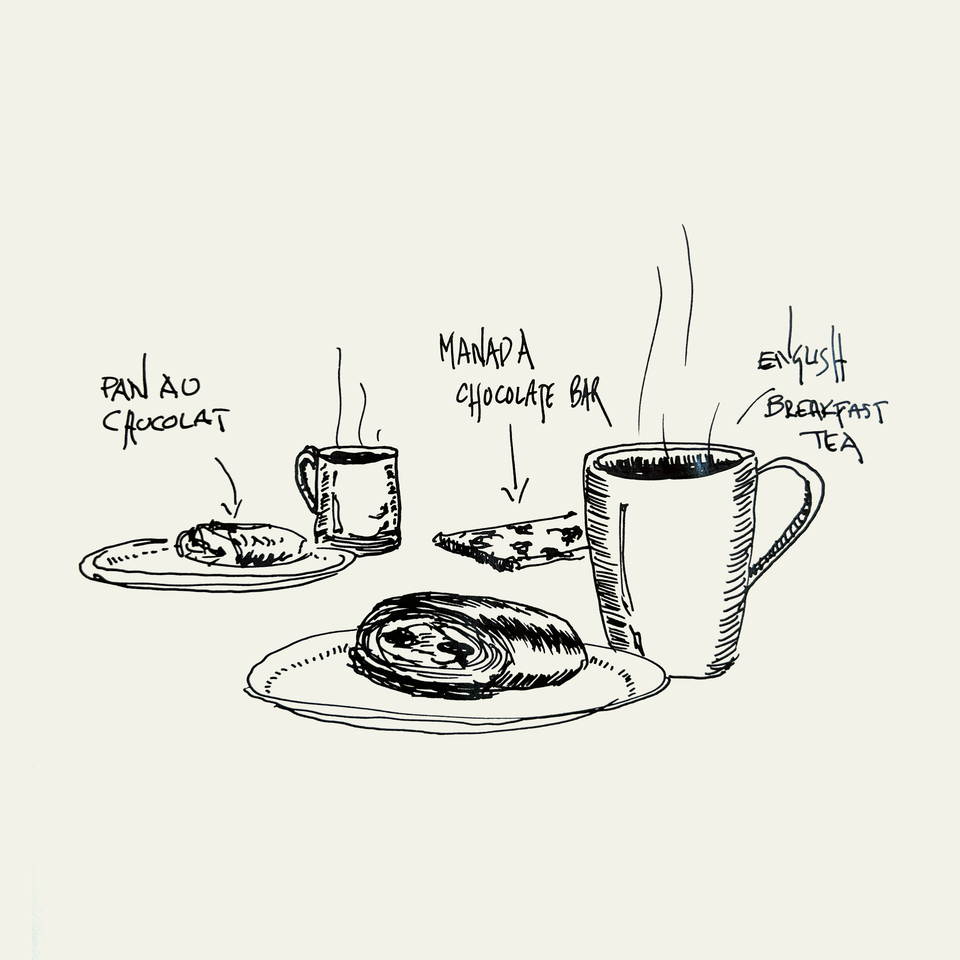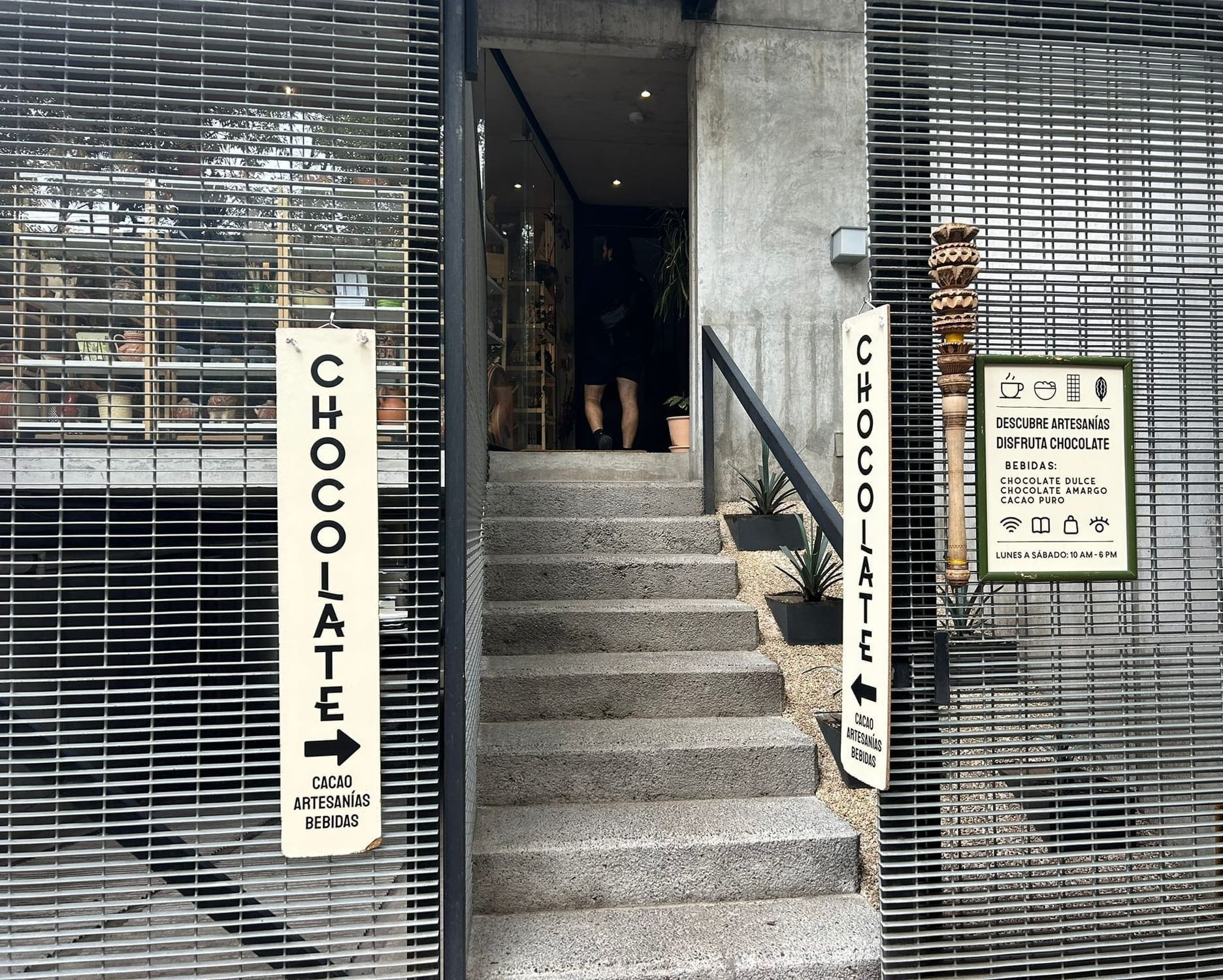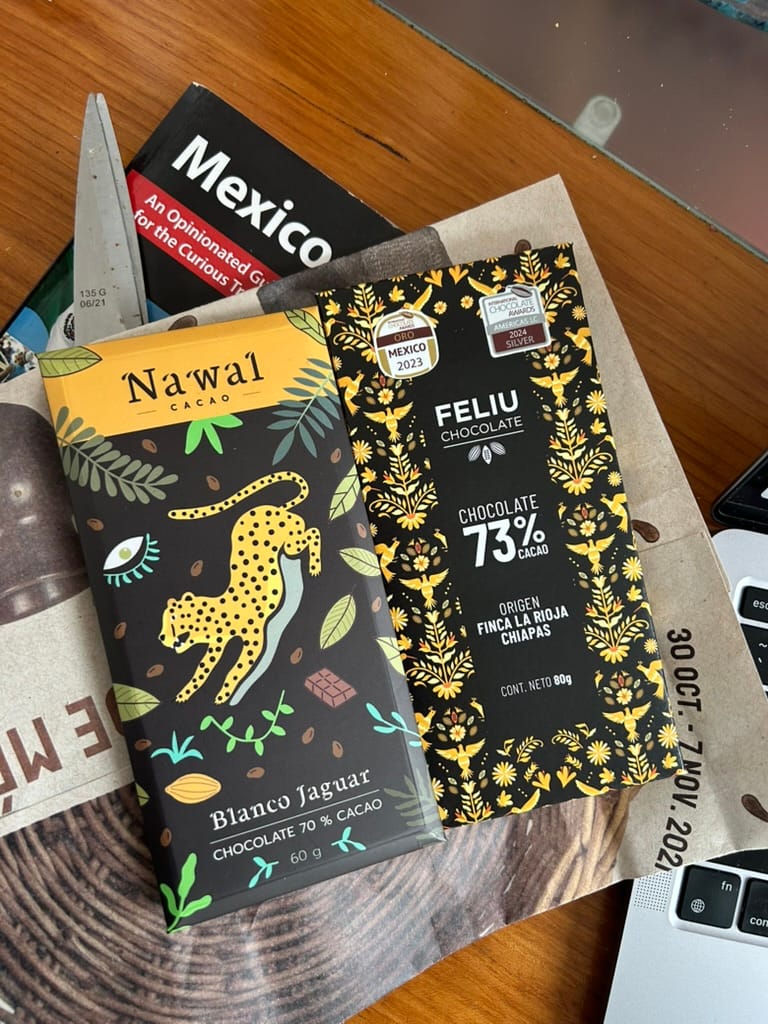MD-15

I've been curious about Mexican chocolate - and have been doing some sampling. Serendipitously, in CDMX, there was a super-cool chocolate shop right across the street from us in Escandón - Coco Para Todos - and the owner helped me understand things better with a bit of background...
Tabasco and Chiapas produce most of the cocoa, with some smaller production in Oaxaca (I was told the Oaxacans prefer to hold on to their cocoa secrets). I learned that regulations keep cocoa prices high, exports low, promote internal consumption and keep raw imports away.
Cocoa processors have to buy all the local harvest before they can look to import anything, so farmers have guaranteed buyers for 100% of their crop, and that doesn't always promote the best quality. It also makes Mexican cocoa about three times the price of West African. Apparently, there is movement afoot to start a high-profile cocoa competition to help boost quality and create some competition.

That it would need any boosting is curious since Mexico is the birthplace of chocolate, with a long history wandering back over 3,000 years. That's a long time – and a lot of chocolate.
From Wikipedia:
It was first used by the Olmecs, then by the Maya and Aztecs, who revered cacao as a sacred drink and even used it as currency. The Aztecs, in particular, associated chocolate with the god Quetzalcoatl and consumed it as a bitter, spicy beverage. When the Spanish arrived, they brought cacao back to Europe, where it was transformed into the sweet milk chocolate we know today. Here's a more detailed look at the history:
Early Use: The earliest evidence of cacao use in Mesoamerica dates back to the Olmec civilization, around 1900-1500 BCE. They likely consumed cacao in a bitter, spiced beverage, possibly fermented.
Mayan and Aztec Cultures: The Maya and Aztec cultures both heavily utilized cacao. Mayan chocolate, called "xocolatl," was a frothy, bitter drink often spiced with chilli peppers and other ingredients. The Aztecs, who considered cacao a gift from the gods, also used it in religious ceremonies and as currency.
Spanish Arrival and European Transformation: Hernán Cortés brought cacao beans and recipes back to Spain in the 16th century. The Spanish adapted the drink, adding sugar and other sweeteners, and eventually introduced it to the rest of Europe.

Mexican chocolate is also used as a savoury ingredient – in mole, tamales, and champurrado. The eating variety seems less processed and has a bit of a coarse texture, it has more cacao, and often has added spices like cinnamon and chilli - I found one with cardamom, which was okay, but I'm still searching for that 'OMG Mexican chocolate bar' experience. I hope I'll stumble across it :-)
As always, thanks for reading and indulging!
Share via Email

Member discussion